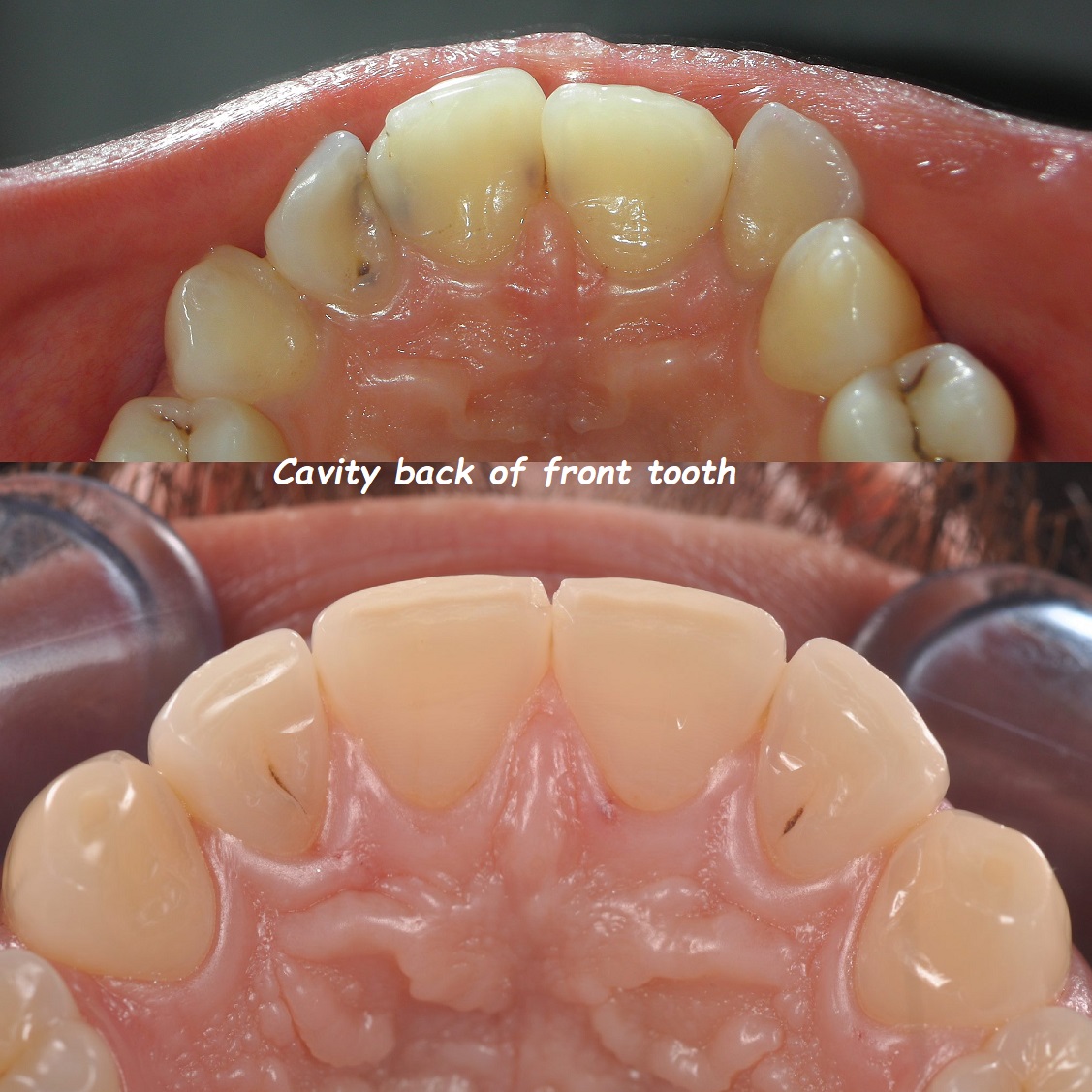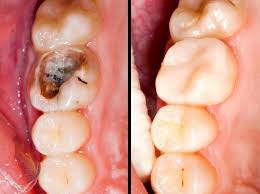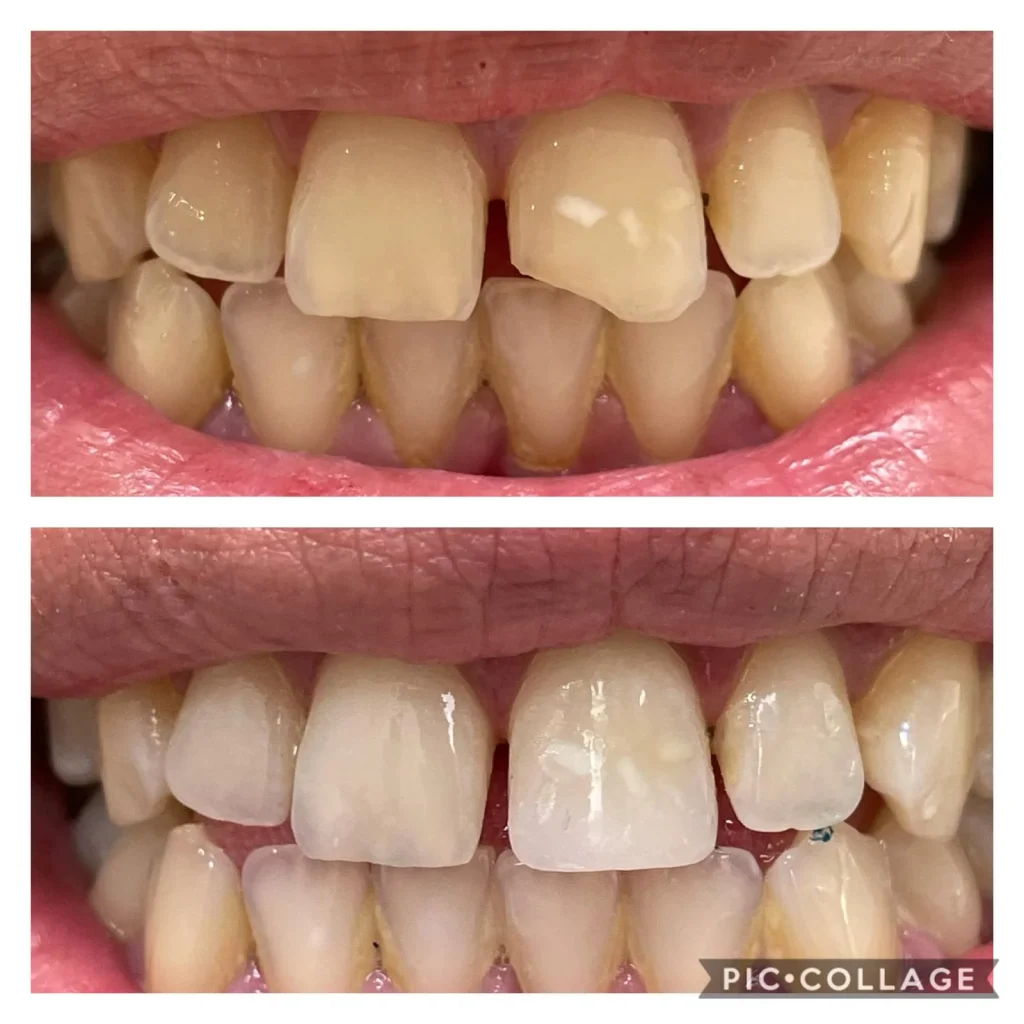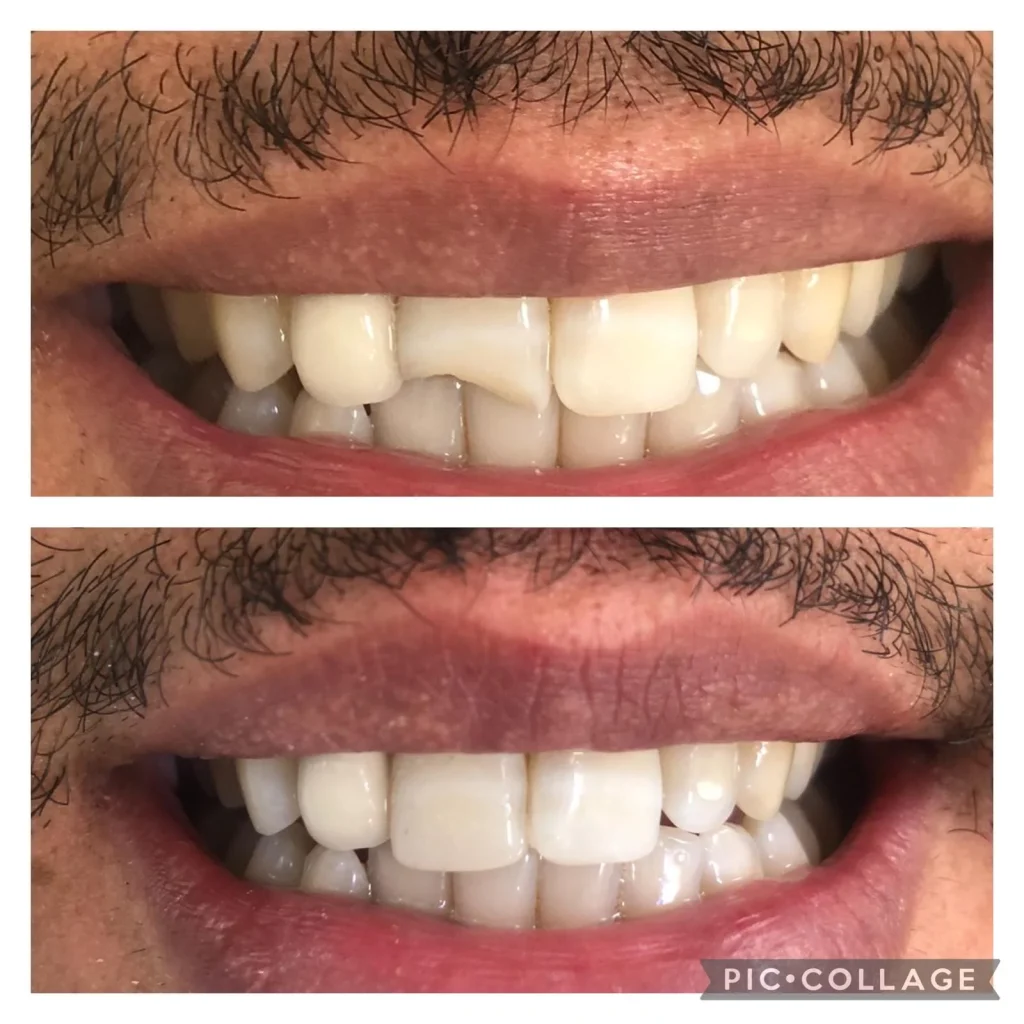Cavity back of front tooth

Cavity on the Back of a Front Tooth: Causes, Treatment, and Prevention
Discovering a cavity on the back of one of your front teeth can be unsettling. Unlike cavities on molars or premolars, which are less visible, a cavity on a front tooth can impact both your smile’s appearance and your overall oral health. Addressing it promptly is essential to prevent further damage and restore the health and aesthetics of your tooth. In this comprehensive guide, we’ll explore the causes of cavities on the back of front teeth, the available treatment options, and how to prevent future cavities from forming in this area.
What Causes Cavities on the Back of Front Teeth?
Cavities, or dental caries, are areas of tooth decay caused by the breakdown of tooth enamel. When plaque—a sticky film of bacteria—builds up on your teeth, the bacteria produce acids that erode the enamel. Over time, this can lead to the formation of cavities. Cavities can develop on any part of a tooth, including the back surfaces of the front teeth. Here are some common causes:
1. Poor Oral Hygiene
Inadequate brushing and flossing can lead to plaque buildup, particularly in hard-to-reach areas like the back of your front teeth. If plaque isn’t removed regularly, it can lead to the formation of cavities.
- Contributing Factors: Not brushing for the recommended two minutes, skipping flossing, or failing to clean the backs of your front teeth properly can all contribute to decay in this area.
2. Diet High in Sugars and Acids
A diet high in sugary and acidic foods and drinks can increase your risk of cavities. Sugar provides fuel for the bacteria in your mouth, allowing them to produce more acid, which weakens the enamel.
- Examples: Sodas, candy, fruit juices, and even certain fruits like citrus can contribute to enamel erosion and cavity formation, especially if consumed frequently.
3. Tight Tooth Contacts
The back of your front teeth can be particularly prone to cavities if the teeth are tightly aligned. Tight contacts between teeth can make it difficult to clean effectively, allowing plaque to accumulate.
- Contributing Factors: Overlapping teeth, crooked teeth, or teeth that are very close together can create small spaces where plaque can hide and cause decay.
4. Gum Recession
Gum recession, which can be caused by gum disease, aggressive brushing, or aging, exposes more of the tooth’s surface, including the roots. The roots of teeth are more vulnerable to decay than the enamel-covered crown.
- Contributing Factors: Gum recession can make the backs of front teeth more susceptible to cavities, especially if oral hygiene practices are not adjusted to address the exposed areas.
5. Use of Tobacco Products
Smoking or using other tobacco products can contribute to plaque buildup and increase the risk of cavities. Tobacco can also cause gum recession, further exposing vulnerable areas of the teeth to decay.
- Contributing Factors: The chemicals in tobacco can dry out the mouth and reduce saliva production, making it easier for bacteria to thrive and cause cavities.
Symptoms of a Cavity on the Back of a Front Tooth
Cavities on the back of front teeth might not be immediately noticeable, especially if they start small. However, there are some signs and symptoms to watch for:
1. Tooth Sensitivity
One of the earliest signs of a cavity is increased sensitivity to hot, cold, or sweet foods and drinks. You might notice a sharp or dull pain when consuming these substances.
- What to Look For: If you experience discomfort when eating or drinking something hot, cold, or sweet, it could indicate a cavity on the back of your front tooth.
2. Visible Discoloration
Cavities can cause visible changes in the color of the tooth. You might notice a small brown, black, or white spot on the back of your front tooth.
- What to Look For: Regularly checking your teeth in a mirror, using good lighting, can help you spot any discoloration early. A dentist can also detect these changes during routine exams.
3. Bad Breath or Unpleasant Taste
Cavities can trap food particles and bacteria, leading to bad breath or a persistent bad taste in your mouth.
- What to Look For: If you notice a lingering bad taste or consistent bad breath that doesn’t go away with brushing or mouthwash, it might be a sign of a cavity.
4. Toothache or Pain
As a cavity progresses, it can cause pain, especially when biting down or applying pressure to the affected tooth.
- What to Look For: If you experience a toothache that doesn’t go away, especially in the front teeth, it’s important to see a dentist promptly.
Treatment Options for a Cavity on the Back of a Front Tooth
The treatment for a cavity on the back of a front tooth will depend on the extent of the decay. Here are the common treatment options:
1. Dental Fillings
For most cavities, including those on the back of front teeth, a dental filling is the standard treatment. The decayed portion of the tooth is removed, and the area is filled with a durable material.
- Materials Used: Composite resin is commonly used for fillings in visible areas like the front teeth. It can be color-matched to your natural tooth, making the filling virtually invisible.
- Procedure: Your dentist will numb the area, remove the decayed tissue, and fill the cavity with composite resin. The material is then hardened with a special light and polished to blend with your natural tooth.
2. Dental Bonding
If the cavity is small or the tooth has been slightly damaged by decay, dental bonding might be an option. Bonding involves applying a tooth-colored resin to the affected area, which is then shaped and polished to restore the tooth’s appearance.
- When It’s Used: Dental bonding is ideal for small cavities or minor damage on the front teeth where aesthetics are a priority.
- Procedure: The tooth is etched to help the resin adhere, and the resin is then applied, shaped, and hardened with a curing light.
3. Fluoride Treatments
If the cavity is caught very early, fluoride treatments can help remineralize the tooth enamel and reverse the decay. This is most effective for very small cavities or areas of demineralization.
- When It’s Used: Fluoride treatments are used for early-stage cavities that haven’t progressed into the deeper layers of the tooth.
- Procedure: Fluoride varnish or gel is applied to the affected area to help strengthen the enamel and stop the progression of decay.
4. Dental Crowns
If the cavity is extensive and has significantly weakened the tooth, a dental crown might be necessary to protect the tooth and restore its function.
- When It’s Used: Crowns are typically used for teeth that have large cavities or have been structurally compromised by decay.
- Procedure: The decayed portion of the tooth is removed, and the tooth is reshaped to accommodate the crown. An impression is taken, and a custom crown is created and bonded to the tooth.
5. Root Canal Therapy
If the cavity has reached the pulp (the innermost part of the tooth containing nerves and blood vessels), a root canal may be necessary to remove the infected tissue and save the tooth.
- When It’s Used: Root canals are needed when the decay has reached the nerve, causing pain or infection.
- Procedure: The infected pulp is removed, the inside of the tooth is cleaned and sealed, and a crown is usually placed to protect the tooth.
Preventing Cavities on the Back of Front Teeth
Preventing cavities is always better than treating them. Here are some strategies to help you avoid cavities, especially on the backs of your front teeth:
1. Maintain Good Oral Hygiene
Brush your teeth at least twice a day with fluoride toothpaste and floss daily. Make sure to clean all surfaces of your teeth, including the backs of your front teeth.
- Tip: Use a toothbrush with a small head and soft bristles to reach all areas of your mouth, including the tight spaces between your front teeth.
2. Use Fluoride Products
Fluoride strengthens tooth enamel and helps prevent cavities. Use fluoride toothpaste and consider adding a fluoride mouthwash to your daily routine.
- Tip: If you’re prone to cavities, your dentist might recommend a prescription-strength fluoride toothpaste or in-office fluoride treatments.
3. Limit Sugary and Acidic Foods
Reducing your intake of sugary and acidic foods can help protect your teeth from decay. If you do consume these foods, rinse your mouth with water afterward to help neutralize acids.
- Tip: Opt for healthier snacks like vegetables, cheese, or nuts that are less likely to contribute to tooth decay.
4. Regular Dental Check-Ups
Visit your dentist regularly for check-ups and professional cleanings. Regular visits allow your dentist to catch cavities early and provide preventive care.
- Tip: Most dentists recommend a check-up and cleaning every six months, but your dentist may suggest more frequent visits if you’re at higher risk for cavities.
5. Consider Dental Sealants
Dental sealants are a protective coating applied to the chewing surfaces of the back teeth, but they can also be used on the backs of front teeth if you’re prone to cavities in those areas.
- Tip: Sealants are particularly beneficial for children and teens, but adults at high risk for cavities can also benefit from this preventive treatment.
Frequently Asked Questions About Cavities on the Back of Front Teeth
Q: Are cavities on the back of front teeth common?
A: While cavities on the back of front teeth are less common than those on molars or premolars, they can still occur, especially if oral hygiene is inadequate or if there are tight spaces between the teeth.
Q: How can I tell if I have a cavity on the back of my front tooth?
A: Look for signs like increased sensitivity, visible discoloration, or pain when biting. Regular dental check-ups are important for detecting cavities that might not be visible to the naked eye.
Q: Can a cavity on the back of a front tooth be filled?
A: Yes, cavities on the back of front teeth can be filled using composite resin, which is tooth-colored and blends seamlessly with your natural teeth.
Q: Is a cavity on a front tooth more serious than on a molar?
A: A cavity on a front tooth is not necessarily more serious, but it can be more noticeable and impact the aesthetics of your smile. Prompt treatment is important to prevent further damage.
Q: How can I prevent cavities from forming on the backs of my front teeth?
A: Key strategies for preventing cavities are maintaining good oral hygiene, using fluoride products, limiting sugary and acidic foods, and visiting your dentist regularly.
Conclusion: Taking Care of Cavities on the Back of Front Teeth
A cavity on the back of a front tooth can affect both your oral health and the appearance of your smile, but with prompt treatment and proper care, you can restore your tooth and prevent further issues. Whether you need a simple filling, bonding, or more extensive treatment, addressing the cavity early is crucial for maintaining a healthy, beautiful smile.
Prevention is always the best approach, so focus on good oral hygiene, regular dental visits, and a healthy diet to keep your teeth cavity-free. If you notice any signs of a cavity or have concerns about your dental health, don’t hesitate to contact your dentist for an evaluation and personalized care plan. By staying proactive, you can protect your teeth and enjoy a strong, confident smile for years to come.









